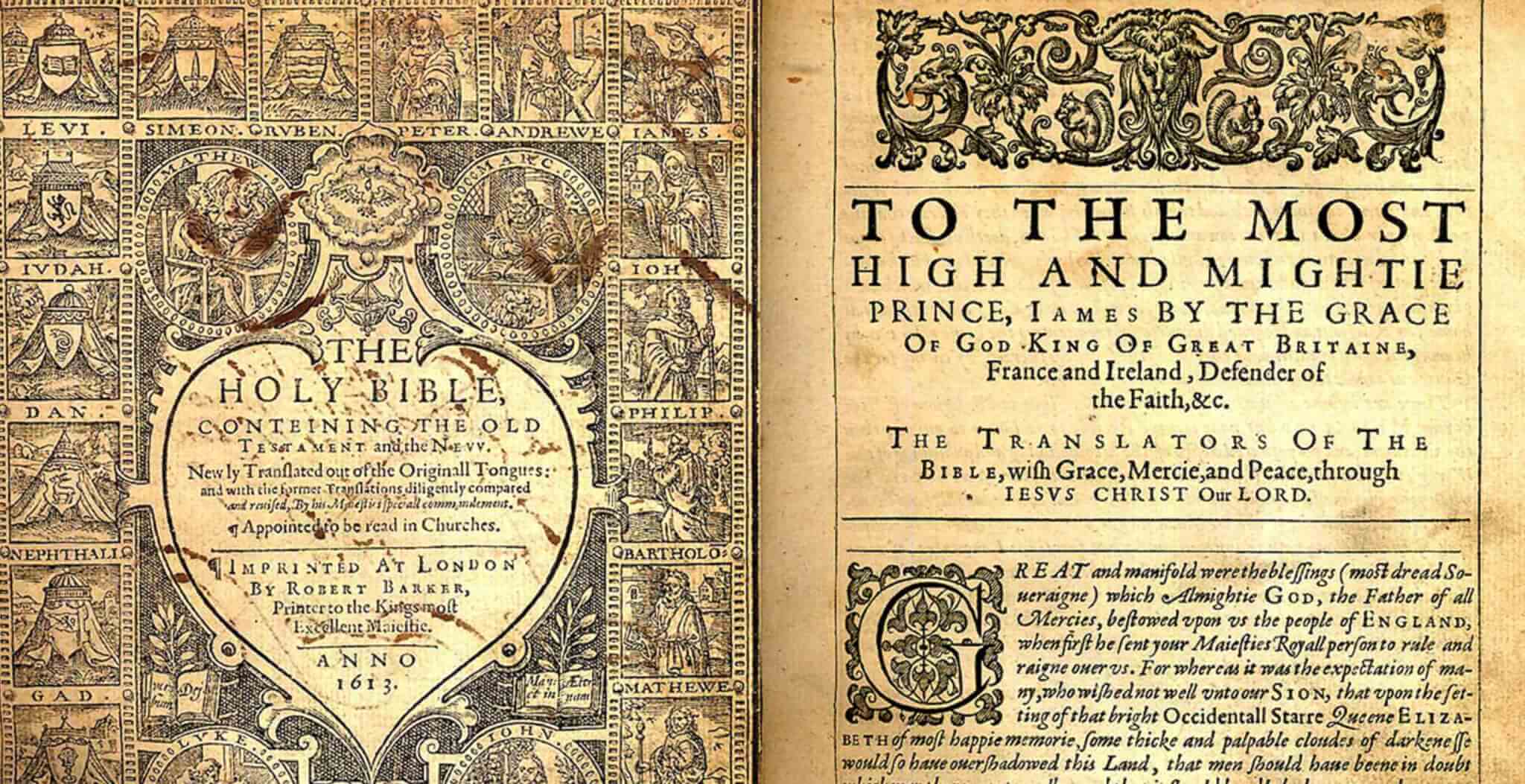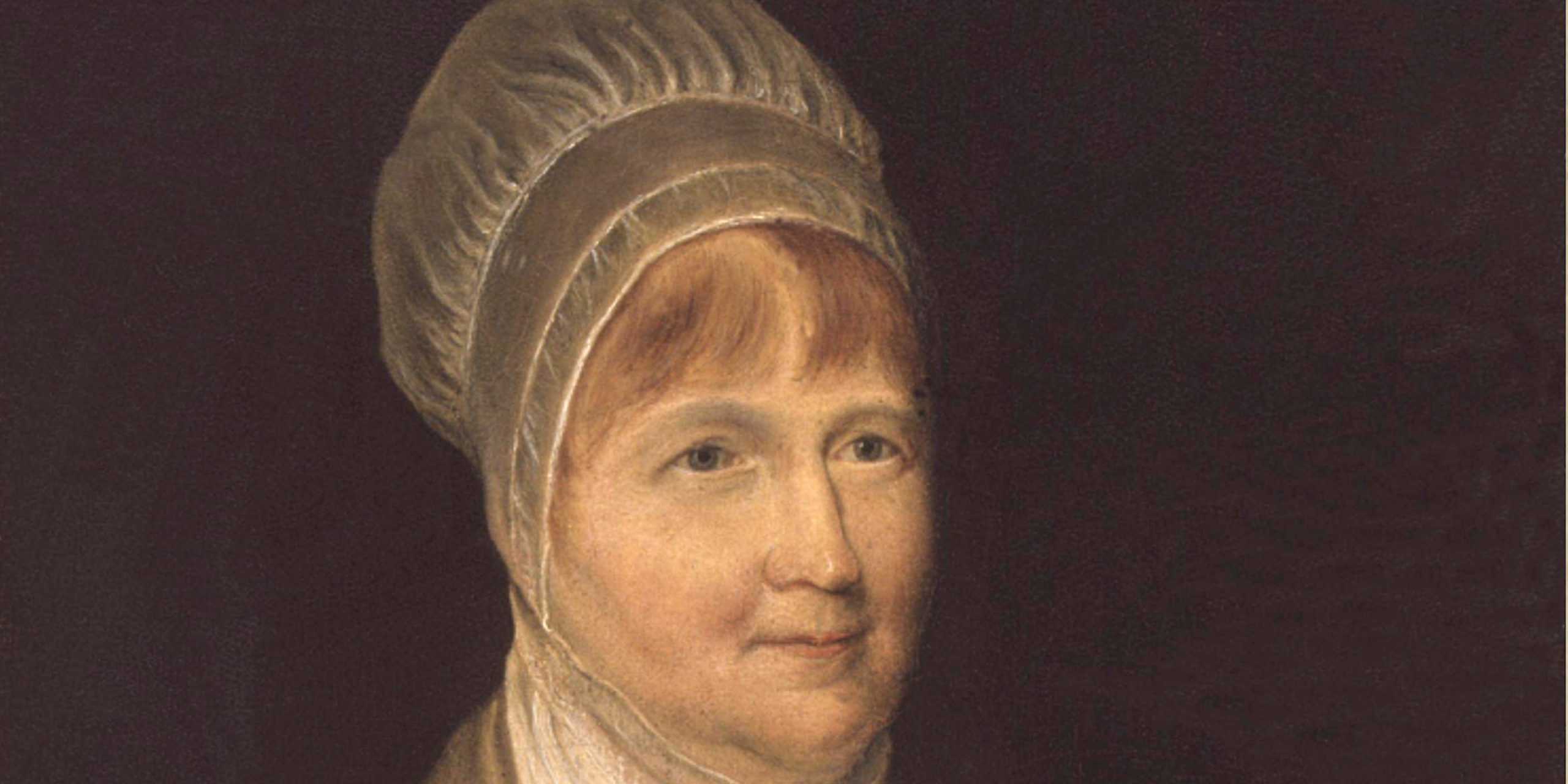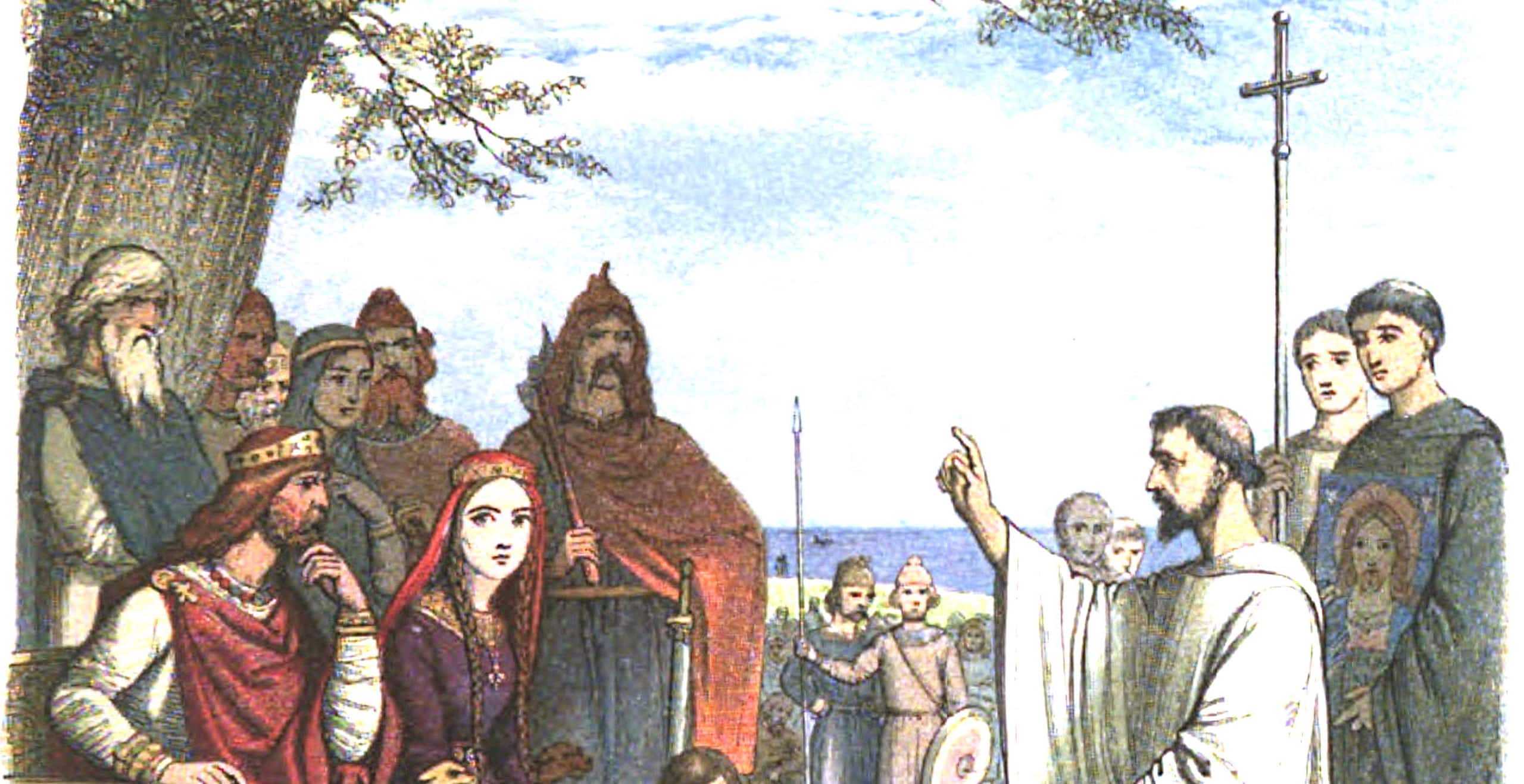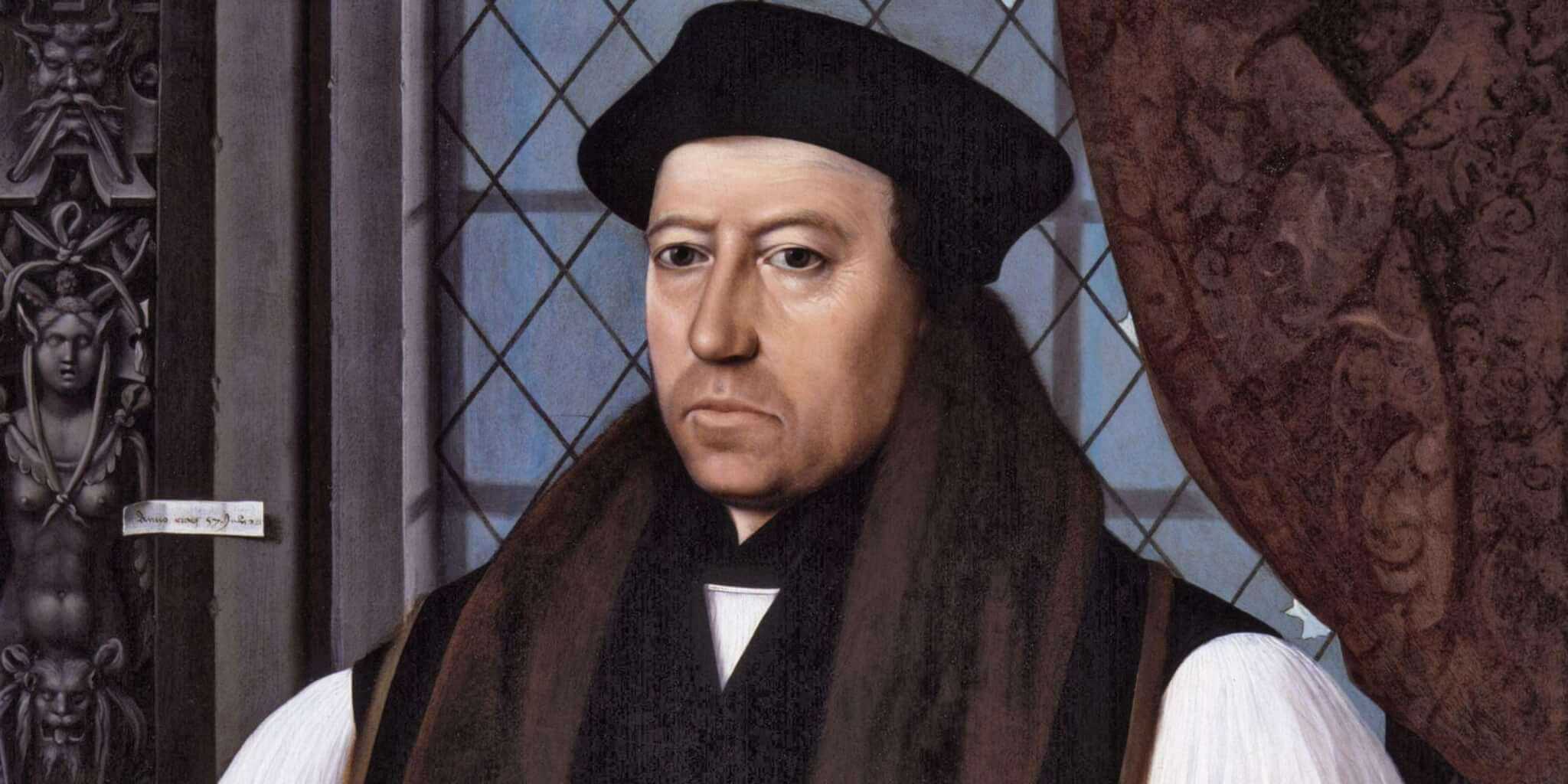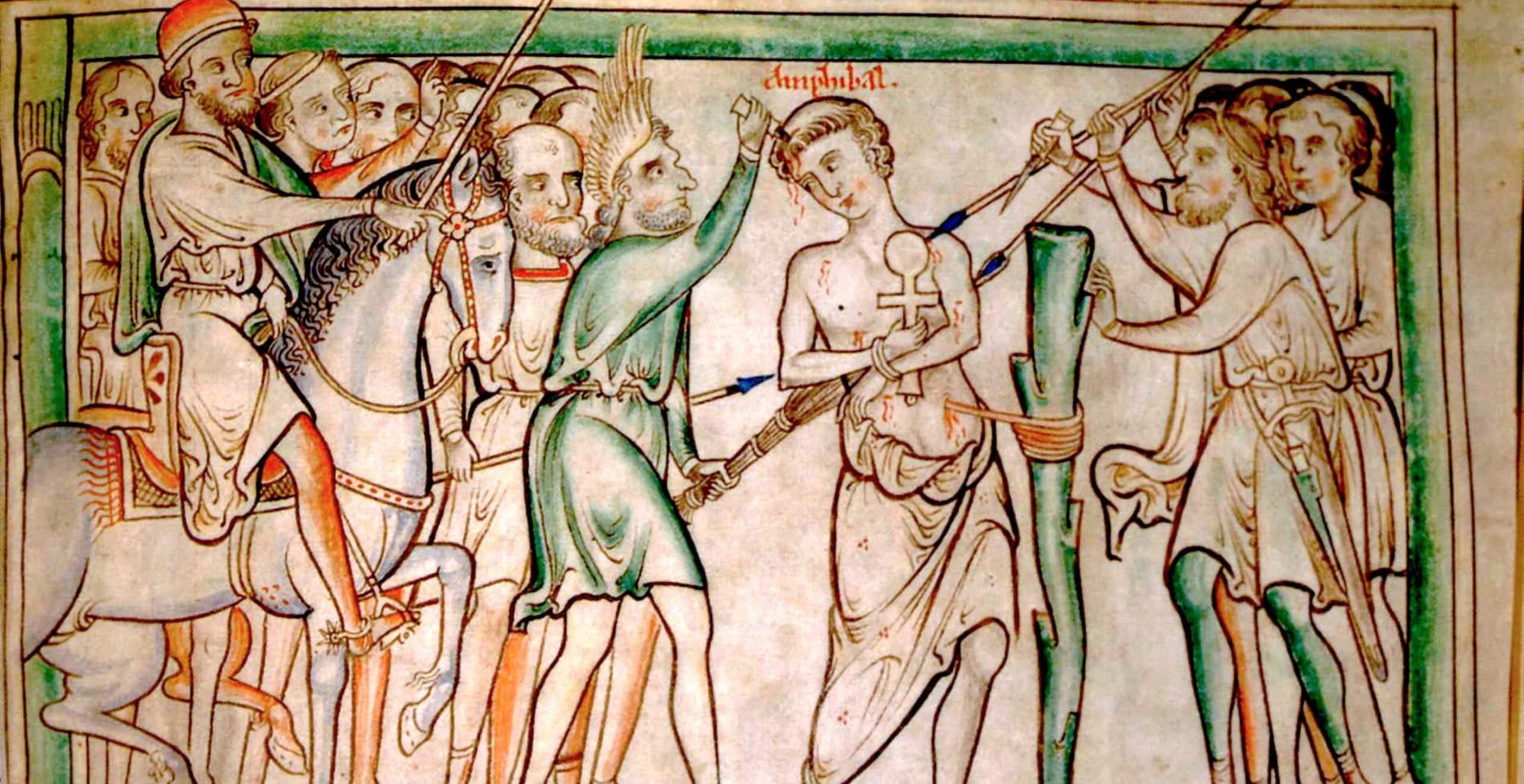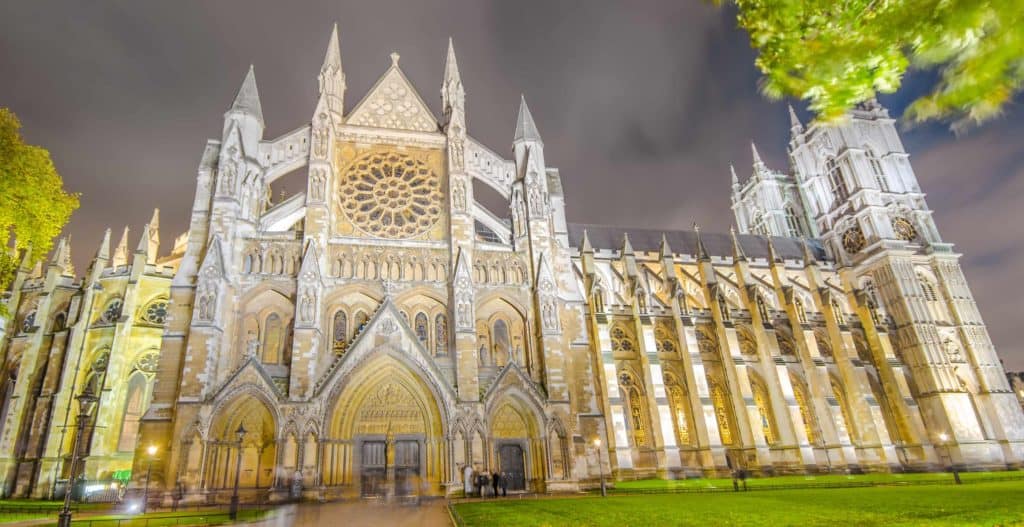“The most influential version of the most influential book in the world, in what is now its most influential language”
– 400 Years of the King James Bible, The Times Literary Supplement 9 February 2011
The King James Bible has long been celebrated as one of the most significant texts of all time, not only for its accessible portrayal of the Christian religion, but also for its ability to spread the English language worldwide to become the dominant global language (in both a commercial and cultural sense) that it is today.
However, whilst it is the most widely recognised version of the Bible today, the King James version is by no means the first translation of the original biblical texts.
Original English Translations
John Wycliffe, the English lay preacher, philosopher and reformist actively supported a translation of the Bible in an attempt to provide more autonomy for the Church of England. Often quoted as a forefather to the Protestant Reformation, Wycliffe and his followers (know as the Lollards), translated the Vulgate (the fourth century Latin version of the Bible) into English during 1382-1384. Further updates were added by Wycliffe’s assistant John Purvey and other supporters in 1388 and 1395, after Wycliffe’s death. He passed away on 31 December 1384 as a result of a stroke suffered several days before during mass in his local parish church.
Whilst Wycliffe’s Bible, as it came to be known, may have been the earliest version of the ‘English’ Bible, it is the translation of the Hebrew and Greek biblical texts by the 16th century scholar, translator and reformist William Tyndale which became the first printed version of the New Testament in 1525, following the advent of the printing press. Whilst he was strangled to death and burned as a heretic before he could complete his translation of the Old Testament, Tynsdale’s translations became the basis for many versions to follow; including the Great Bible of 1539, the first authorised edition of the Bible in English; the Geneva Bible of 1560, which was produced by the English religious reformers who had fled to Geneva when the catholic Mary Tudor took to the throne, and indeed the King James Bible itself.
 By the time Elizabeth I took the throne in 1558, England was split between supporters of the populist Geneva Bible, the Church of England’s Bishop’s Bible – a weighty, expensive and therefore less popular reworking of the Great Bible – and the Douay-Rheims New Testament of 1582, which was produced by exiled Roman Catholics as part of a Counter Reformation.
By the time Elizabeth I took the throne in 1558, England was split between supporters of the populist Geneva Bible, the Church of England’s Bishop’s Bible – a weighty, expensive and therefore less popular reworking of the Great Bible – and the Douay-Rheims New Testament of 1582, which was produced by exiled Roman Catholics as part of a Counter Reformation.
A new King and a new Bible
In May 1601, King James VI of Scotland attended the General Assembly of the Church of Scotland at St Columba’s Church in Burntisland, Fife to argue in favour of a new translation of the Bible into English having actually translated a number of psalms himself. The result was an updated Geneva bible, published in Scotland with English text and a Scottish preface.
Following the death of Elizabeth I in 1603, James was notified of his right to the throne by the Privy Council and was sent Elizabeth’s ring as a symbolic gesture of his claim. James then travelled from Edinburgh to London to become King James I, uniting the two crowns. Whilst there was a peaceful acceptance of James as the new English King he inherited the deep and fearful religious struggles of Elizabeth’s reign.
Having clashed at times with the opinionated reformists in the wake of Scotland’s reformation in the 1560s, James became the most strong and effective King Scotland had seen for many years. However at the same time, England was experiencing the Elizabethan settlement of religion. Having come to the throne as a very young woman Elizabeth was confronted with major religion volatility. Her father Henry had been a strong Protestant, but his predecessor Mary Tudor had taken England in a very Catholic direction. Elizabeth strove to assert her own authority as a monarch and strike a balance between Protestantism and Catholicism and restore stability to the country.
In the wake of Elizabeth’s death religious uncertainty was a very real debate across the land. Roman Catholics hoped that some of the penal laws against them would be relaxed and Puritans rushed to show support of James in the hopes that he would agree to their wishes. James was given a list of demands by the opposing factions and whilst there was no suggestion at this time that a new English version of Bible should be created there was a great pressure on him to do something.
The Commission and translation
 It was on 18 January 1604 that James summoned a collection of scholars and churchman to attend a conference at Hampton Court, where he was based to avoid the plague that had taken hold of London. A notable attendee on behalf of the Bishops was Richard Bancroft, Bishop of London and future Archbishop of Canterbury, who presided over the conference. As a leading member of the Puritan delegation, John Reynolds was invited to the conference because of his academic excellence and politically and ecclesiastically moderate views.
It was on 18 January 1604 that James summoned a collection of scholars and churchman to attend a conference at Hampton Court, where he was based to avoid the plague that had taken hold of London. A notable attendee on behalf of the Bishops was Richard Bancroft, Bishop of London and future Archbishop of Canterbury, who presided over the conference. As a leading member of the Puritan delegation, John Reynolds was invited to the conference because of his academic excellence and politically and ecclesiastically moderate views.
The conference took place in the Privy Chamber in the presence of both James and his Privy Council. The three day conference was billed as a discussion on the provision of preachers in Ireland, whether ecclesiastical courts could excommunicate people from church and a consideration of the Puritan objections to readings and prayers in the Bible. James was keen to let both parties know that he wished to seek a continuity of what had gone before and was not looking for change but confirmation of what has been settled already.
On the second day, Reynolds accidently angered the King by suggesting a model of the church to include the bishop and congregation working together in a presbytery. Having faced numerous troubles with the Scottish Presbyterians James was unhappy with the ill thought out reference. Sensing he was losing ground Reynolds shifted tack to raise the issues the Puritans had with the Bishop’s Bible and request that another Bible more in keeping with the Puritan way of thinking could be authorised to be read allowed in Church, namely the Geneva Bible. Whilst James was in agreement with the principles of the Geneva translation, he was very much opposed to its annotation, in particular the marginal note in the first chapter of the book of Exodus which questioned the authority of the King. It was at this stage that James suggested a new translation as a compromise.
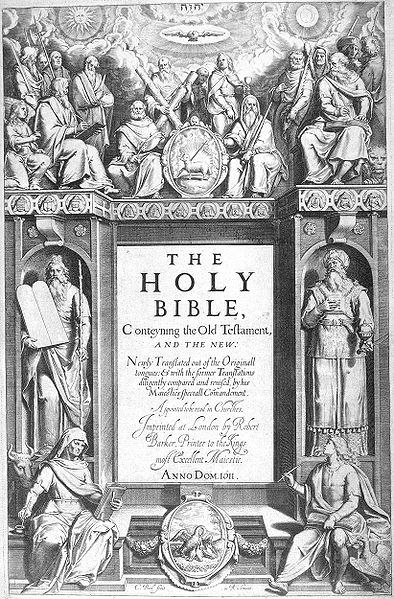
Frontispiece to the King James’ Bible, 1611, shows the Twelve Apostles at the top. Moses and Aaron flank the central text. In the four corners sit Matthew, Mark, Luke, and John, authors of the four gospels, with their symbolic animals
A committee of 54 translators and revisers made up of the most learned men in the nation was introduced to complete the translation and was made up of 6 committees, called companies. Three companies were responsible for the Old Testament, two for the New Testament and one for the Apocrypha, the books that the Protestant Christian Church considered useful but not divinely inspired.
James and Bancroft drew up very specific rules for the translators, which included the process of exchanging drafts which were then subject to close scrutiny and the exclusion of the marginal notes which had made the Geneva translation so problematic.
The King, Bishops and Puritans all left the conference happy that their needs (or at least some of them) had been met. Whilst the Puritans had lost most of their arguments about the ceremonial aspect of the Church of England service they had gained a new translation of the Bible so were reasonably happy. It wasn’t until later that they realised that the rules of the new Bible were actually stacked against them.
By 1608 the various sections were completed and in 1610 a meeting was held to discuss and agree the translation at the Stationers Hall in the City of London and the King James Bible was published by Robert Barker, the King’s Printer, in 1611.
The legacy of the King James’ Bible
The King James Bible was read in every church throughout the country and the archaic language which was heard so regularly by so many imbedded itself in the nation’s consciousness and vernacular, as every day and familiar as the practice of Christian worship itself.
The most striking characteristic of the translation is its simplicity. The Bible was written with resonance and uplifting rhythms. It was easy to remember with the familiar structure of 10 syllables and an iambic rhythm which was written to be spoken, much like Shakespeare and Milton.
It was not just the influence of the prose and language; the actual stories themselves were hugely influential on eighteenth and nineteenth century writers. Novels like Moby Dick and The Old Man and the Sea are inspired by the King James Bible. This influence went beyond literature and provided inspiration for many hymns and musical compositions such as Handel’s most famous eighteenth century piece, Messiah.
However, the King James Bible did not only influence UK culture, but went on to have a worldwide presence.
The King James Bible first travelled overseas when the Puritan group known as the Pilgrim Fathers set sail for America on the Mayflower in 1620. Their plan was to set up a new civilisation more in-keeping with their Puritan ideals. Having taken the Bible with them it was soon established at the centre of America’s religious culture.
The bible and missionary societies of St Paul’s Cathedral also exported the Bible throughout the world, with the simple vocabulary lending itself to translation into foreign languages and as a useful tool for teaching and learning the English Language.
The growth of the British Empire was also a great mechanism for spreading the English language and the King James Bible was always stowed aboard the great merchant navy ships, becoming the first English book that many would encounter worldwide. The East India Company alone saw it travel to India and to the colonies in Africa, Australia and New Zealand; another reason why English is now a dominant world language.
The King James Bible has contributed 257 phrases to the English language, more than any other single source, including the works of Shakespeare. Expressions such as “a Fly in the ointment”, “thorn in the side” and “Do we see eye to eye”, which are still commonly used today all originated in the Bible. Whilst it is the revised, grammatically correct eighteenth century version of the Bible produced by Benjamin Blayney that is more commonly used today, the lasting appeal of the King James Bible cannot be argued.
From those who worship Christianity to those who worship our cultural heritage, the King James Bible represents the English literature and language that we hold dear as well as an enduring instrument of faith. Ironically the translation which was an impulsive suggestion at King James’ conference of 1604 is in fact the enduring artefact of those discussions.
The King James Bible Trust has been established to celebrate the 400th anniversary of the first English translation of the Bible.
